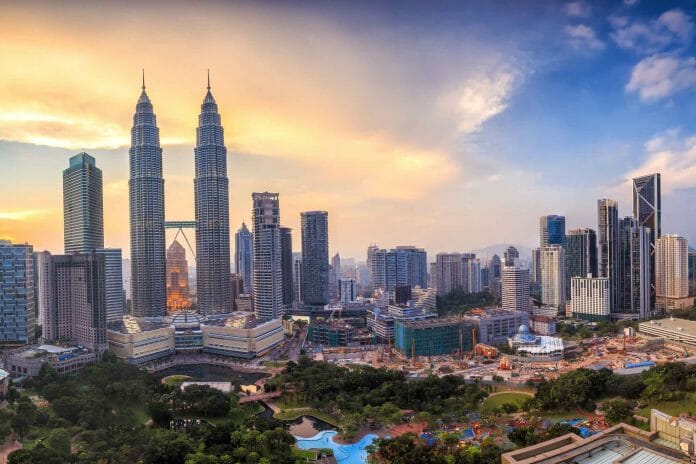How investors should strategise their portfolios in view of the coming Budget 2023. RHB Research has published the Market Strategy for Budget 2023 – A Preview for investors.
Between a rock and a hard place. The current political dynamic and impending election suggest that the Government will need to loosen its purse strings to engender a feel-good factor. Expectations are for a market-friendly Budget 2023 containing “goodies” for individuals and businesses, but the quantum of handouts and pump-priming initiatives will be tempered by the lack of fiscal headroom – considering the expectation of a slowing economy in 2023F, with investors also looking out for additional taxes on the private sector. RHB Research holds the view that the consumer sector as the biggest beneficiary.
Politics in the mix. Media reports suggest that Prime Minister Ismail Sabri Yaakob is being persuaded to conduct the 15th general election (GE15) as soon as 4Q22 – a theory that has been reinforced by the tabling of Budget 2023 on 7 Oct, three weeks earlier than previously scheduled. With Barisan (BN) strategists confident that the electoral winds have shifted in their
favour, no stone will be left unturned to ensure that the budget offers every assistance to the electorate at large, and to businesses to assist their recovery from the ravages of the pandemic. However, with the debt-to-GDP ratios creeping higher, coupled with a rising subsidy bill that will continue to escalate the later GE15 is held, it is believed the Government
will need to be mindful of the fiscal deficit, and new revenue-raising initiatives or the postponement of planned expenditures might not be ruled out.
The usual suspects. It is expected the budget to emphasise on automation, technology and sustainability. The digitalisation drive could be positive for names like CTOS Digital, GHL Systems and Revenue Group. Social assistance initiatives may benefit the broader consumer sector. More punitive taxes on the brewery and tobacco sectors are improbable, as it will likely prove to be counter-productive.
Meanwhile, the research house has low expectations on any significant incentives for the property sector. Construction may see headlines from some pre-polls pump-priming but this is likely to be skewed towards smaller contractors. Larger projects could still be announced, but these would require private funding requirements.
Also, the Government is unlikely to increase gaming taxes as the industry was badly affected by the pandemic. The research house anticipates the number-forecast operators (NFOs) will get to maintain 22 special draws in 2023 to maximise tax revenues. The automotive sector may receive a fillip from incentives to expedite EV production and adoption, with an outside chance of greater clarity on the forthcoming excise duty reform.
Strategy for investors. Macroeconomic risks remain centred on the monetary policy trajectory, coupled with an evolving geopolitical environment that continues to give investors pause for thought on the prospects for risk assets. The market’s attempt to price in the outlook for 2023 continues to be stymied by limited visibility, leaving investors on the fence. RHB Research advocates a core defensive stance, coupled with a trading mentality. Investors should also seek attractive entry points to nibble on weakness.
Those sectors which get the “OVERWEIGHT” rating by the research house are banks, non-bank financial institutions (NBFI), oil & gas, healthcare, basic materials, gaming and technology.
Healthcare – OVERWEIGHT
The Research house expects Budget 2023 to contain a higher allocation for the healthcare sector, with the bulk of the proceeds channelled towards the nation’s healthcare infrastructure to improve the quality and ensure the affordability of public healthcare services. The preparedness of the country to welcoming medical tourism should be on the MOF’s cards, as we believe budget allocation towards the Malaysia Healthcare Travel Council (MHTC) (2022: MYR20m; 2021: MYR35m) will be higher than that of last year following the re-opening of cross-border travel since April.
Following Malaysia’s transition to endemicity, a tax relief of up to MYR1,000 in relation to COVID-19 screening will likely be discontinued or reduced. Apart from that, there is a proposal from the Association of Private Hospitals Malaysia (APHM) to increase public healthcare expenditure to 5% of GDP, from 2.6% currently. The key initiative is to increase the adoption of digital technology applications on healthy lifestyle intervention, and at the same time strengthen private-public healthcare collaborations. While the 5% target may still look ambitious at this point, we believe the budget allocation for healthcare should gradually ramp up to be aligned with the 12th Malaysia Plan (12MP) initiative, in strengthening the nation’s healthcare system and improving its readiness to facilitate an aging population by 2044.









